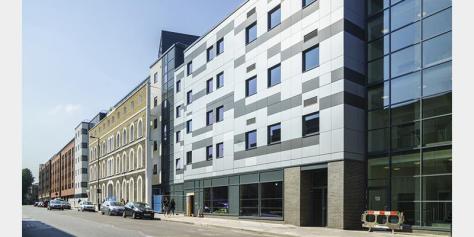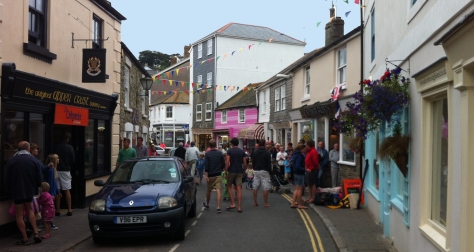Following the recent award of BD’s Carbuncle Cup to the UCL Student Housing development on Caledonian Road in London, the architectural press have created somewhat of a storm around the quality of student housing and design standards.
Above: Calendonian Road, London
Personally I think the media are ten years too late for all this. I believe that in general the design quality of purpose built student housing has improved significantly from early generation developments. There are many reasons for this, not least of which the need for new developments to continually offer more than any existing student housing within a locale. I spoke at a conference back in May about this – you can see my talk by clicking here.
 Above: Early 1st Generation purpose built student accommodation.
Above: Early 1st Generation purpose built student accommodation.
There is a continual debate about what contemporary student needs are and how that is designed into purpose built accommodation. Investors and developers remain attracted to student housing, but land values and capital build costs necessitate a relatively fine balance in terms of ensuring schemes are viable – and more importantly; fundable. The rental price point and ensuring maximum occupancy demand are clearly key factors as students pay upwards of £4500 per year for their ‘digs’.
Ultimately students who decide to occupy these buildings are essentially endorsing them by choosing to live there and pay rent. Therefore how relevant is any third party criticism of what others’ think’ is right or wrong?
To give this subject some wider context it is worth noting that the growth of student housing has been fuelled by a shift away from extremely poor quality student housing within HMO’s owned by single Landlords. This sort of accommodation has gained a reputation for shopping trolleys in gardens, damp/ cold homes, within student ghetto’s where transient population issues lead to social problems with owner-occupied homes. Purpose built student housing is a positive and necessary asset class. Students need to live somewhere and the UK higher education system is amongst the best in the world, delivering many economic benefits.
The Government have recently recognised the need to gain a better understanding of this asset class by forming a British Property Federation group, led by Unite MD Richard Simpson, to advise/ support Government on a wide range of policy matters affecting Students and their housing. You can find out more here. This was following the ‘perfect storm’ of 2012 where the sector felt a hit by the £9k fees hike, immigration laws changing and A-level scoring levels being adjusted. I know a number of people who sit on this group and I receive regular BPF communications on current issues being discussed.
One point of contention in the media this week is the size of bedrooms and more specifically their window sizes. On the Caledonian Road development a comparison has been made with a local prison and a suggestion that prisoners get better quality living accommodation than students. A fundamental difference is of course that students can get out when they want – and they choose and pay to live there!
A student bedroom generally serves 2-3 uses; desk based working, sleeping, relaxing (TV, gaming, social media, internet etc). This is fairly consistent with a domestic bedroom within a home. From my experience student bedroom window sizes are broadly in-line, if not better, than modern domestic homes. There are other factors which come into play when comparing purpose built student housing to domestic properties. Student housing buildings are intensely cellular in their floor layout planning. This is largely unavoidable and issues with security, fire separation and heating/ cooling these spaces are always an issue. Almost all doors must normally be closed preventing natural ventilation occurring. Bedroom windows are typically restricted in their opening due to a number of operational concerns with taller buildings. These issues directly influence the practical size of windows. Students also have an increasing range of on-site alternative spaces for daytime occupation. These include shared Kitchen/ Living rooms, common rooms, external amenity spaces, coffee lounges, gyms etc.
I think there are valid points to be made about the need for new student housing to be built of a suitable quality, both internally and externally. But I think this current media hype needs to be considered in a broader perspective. It seems to me that people are jumping on a band wagon here, with little actual knowledge or understanding of these buildings and how they operate.
There will always be exceptions, as with all building types, which stand out for criticism. It is inevitable that student housing would feature highly this year when you consider how strong this sector is whilst other remain slow/ dormant! But this should not open the flood gates for complete sector wide reviews and suggestions of regulatory policies being required.



